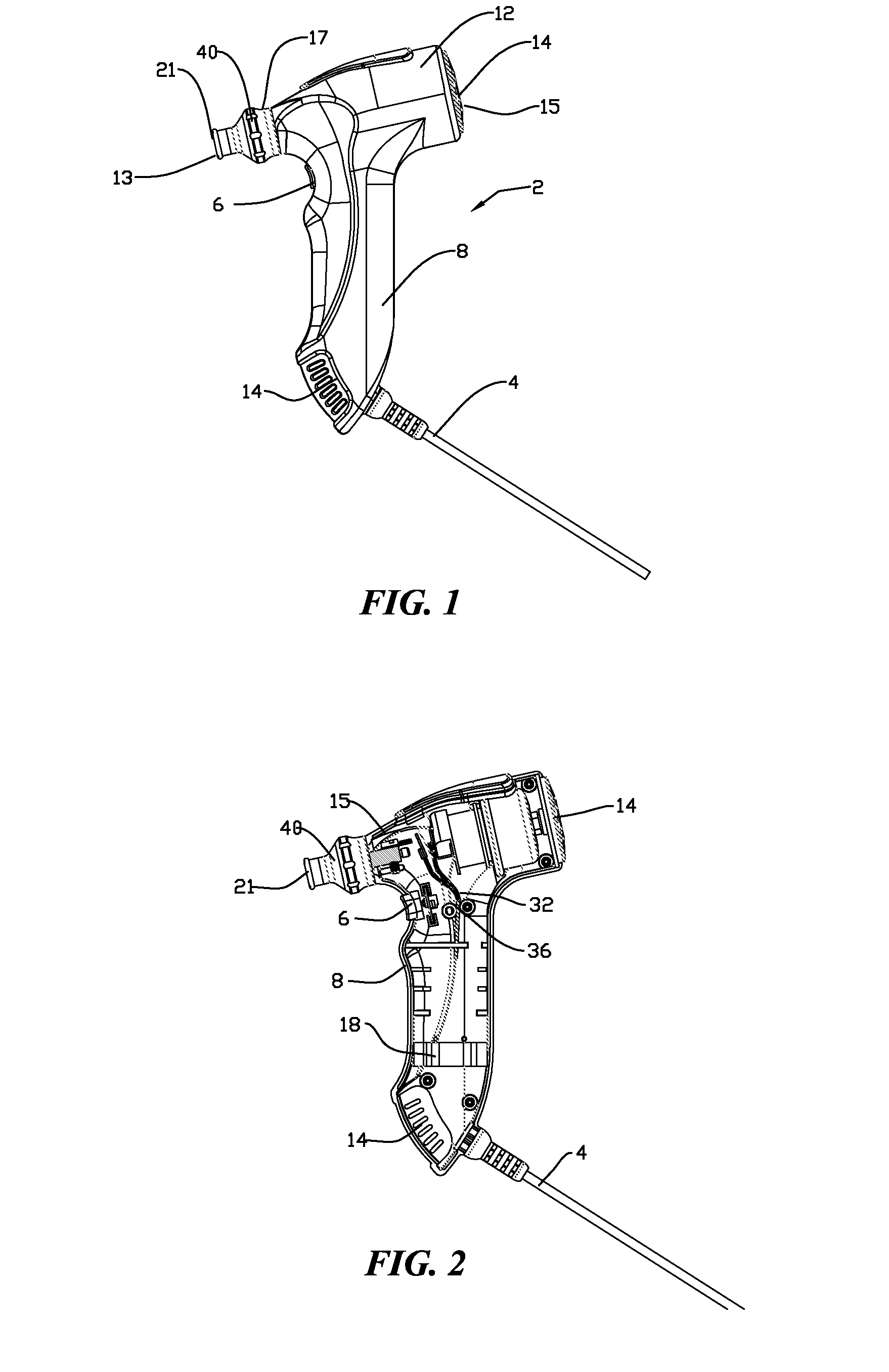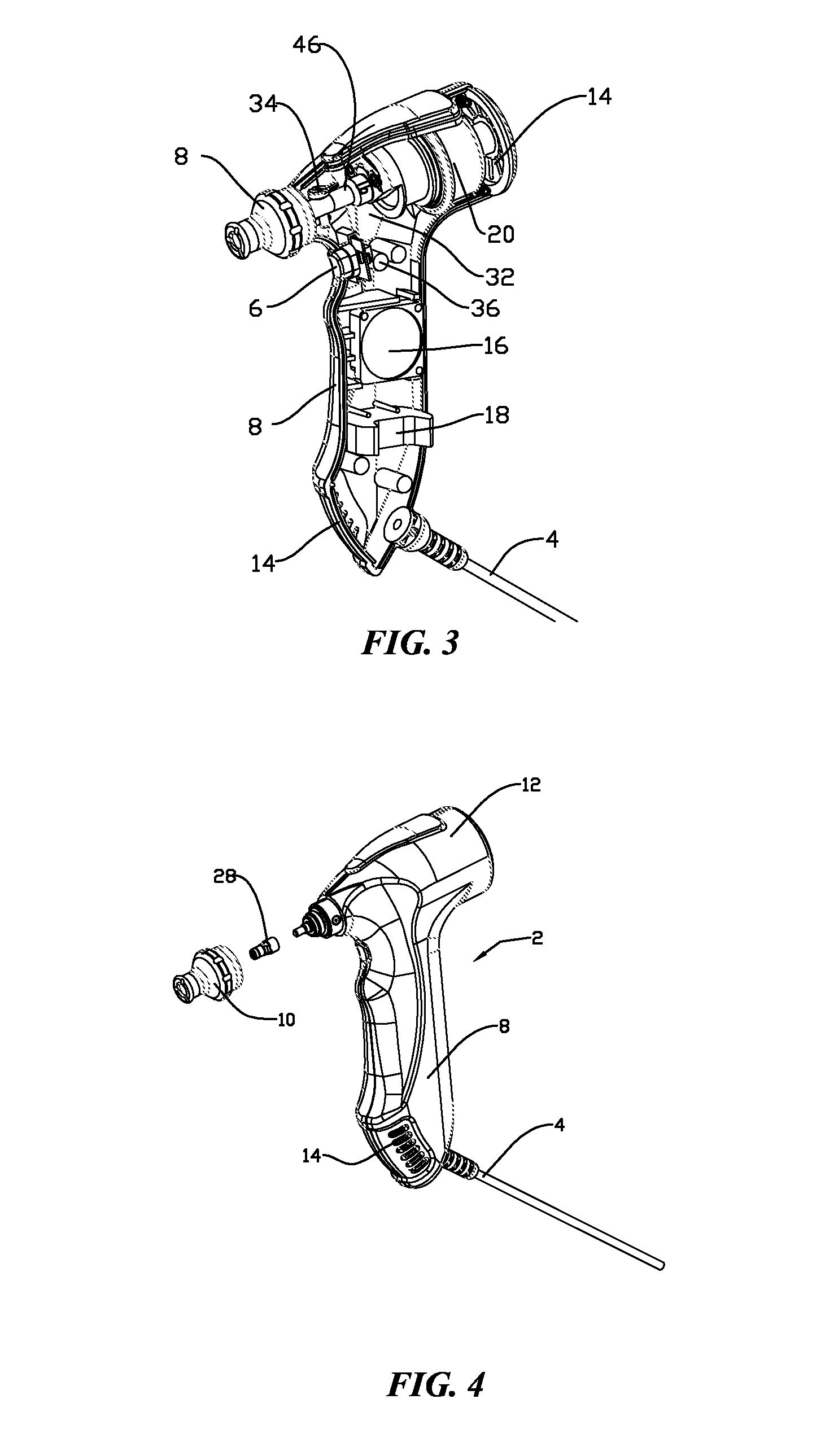Probe for obtaining bioelectrical signals
a bioelectrical and probe technology, applied in the field of bioelectrical probes, can solve the problems of inaccurate measurement values, inability to precisely locate the probe tip, and difficulty in using traditional systems to pinpoint the precise location of such acupressure points, etc., to achieve accurate measurement of signals and facilitate manufactur
- Summary
- Abstract
- Description
- Claims
- Application Information
AI Technical Summary
Benefits of technology
Problems solved by technology
Method used
Image
Examples
Embodiment Construction
[0022]The following discussion describes embodiments of the invention and several variations of these embodiments. This discussion should not be construed, however, as limiting the invention to these particular embodiments. Practitioners skilled in the art will recognize numerous other embodiments as well. It is not necessary that the probe have all the feature described below with regard to the specific embodiment of the invention shown in the figures.
[0023]In the flowing description of the invention, certain terminology is used for the purpose of reference only, and is not intend to be limiting. Terms such as “upper”, “lower”, “above”, and “below,” refer to directions in the drawings to which reference is made. Terms such as “inward” and “outward” refer to directions towards and away from, respectively, the geometric center of the component described. Terms such as “side”, “top”, “bottom,”“horizontal,” and “vertical,” describe the orientation of portions of the component within a ...
PUM
 Login to View More
Login to View More Abstract
Description
Claims
Application Information
 Login to View More
Login to View More - R&D
- Intellectual Property
- Life Sciences
- Materials
- Tech Scout
- Unparalleled Data Quality
- Higher Quality Content
- 60% Fewer Hallucinations
Browse by: Latest US Patents, China's latest patents, Technical Efficacy Thesaurus, Application Domain, Technology Topic, Popular Technical Reports.
© 2025 PatSnap. All rights reserved.Legal|Privacy policy|Modern Slavery Act Transparency Statement|Sitemap|About US| Contact US: help@patsnap.com



